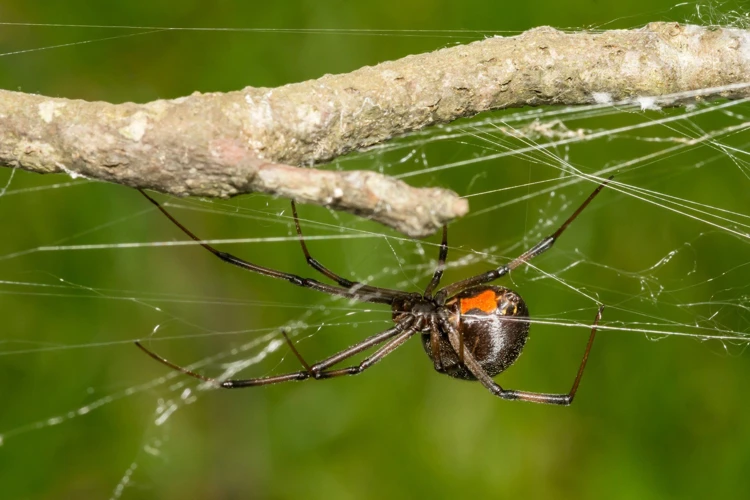It’s that time of the year again when black widow spiders start to creep and crawl their way into our homes, causing anxiety and fear for many homeowners. Dealing with these venomous arachnids can be a daunting task, and it’s essential to have a comprehensive pest management plan in place. In this article, we’ll explore effective integrated pest management strategies for black widow spiders, providing you with step-by-step guidance to identifying, preventing, and managing these pests. Whether you’re a homeowner or a pest control professional, our guide will equip you with the tools and knowledge needed to handle black widow spiders quickly and efficiently.
Background
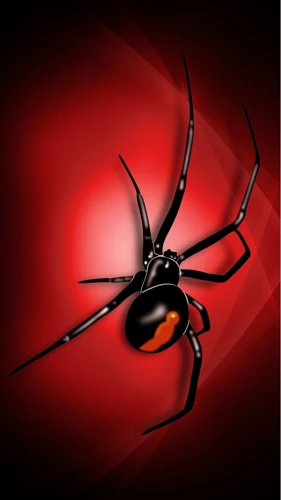
It’s important to understand the background of black widow spiders and pest management in order to effectively control their populations. Black widow spiders are venomous spiders commonly found in the warmer regions of North America. They are known for their distinctive black color, red hourglass-shaped marking on their abdomen, and their potent bites, which can be harmful to humans and pets. Pest management for black widow spiders typically involves a combination of chemical and non-chemical approaches, such as pesticides, biocontrol, and mechanical control. However, many people are looking for alternatives to chemical pesticides due to health and environmental concerns. In this article, we will explore effective integrated pest management strategies for black widow spiders, as well as green pest management alternatives.
Black Widow Spiders
Black widow spiders are one of the most well-known and recognizable spiders in the world. They are known for their distinctive black body and the red hourglass shape on their abdomen. These spiders are commonly found in warm, dry climates and are often found in dark, hidden areas such as woodpiles, garages, and sheds. They are venomous and can pose a threat to humans if they are disturbed or provoked.
It is important to note that not all black spiders are black widow spiders. To identify if a spider is a black widow, one should look for the red hourglass mark on the underside of the spider’s abdomen. If this mark is not present, it is likely not a black widow spider. Additionally, male black widow spiders do not typically display the hourglass mark and are generally smaller than the females.
Black widow spiders are not only a nuisance but can potentially be dangerous to people and pets. Their venom can cause severe health problems, including muscle pain, spasms, and difficulty breathing. It is important to take steps to prevent black widow spider infestations and to learn how to effectively manage them.
Some interesting facts about black widow spiders:
- Black widow spiders are the most venomous spider in North America.
- They are not aggressive and will only bite humans if they feel threatened.
- Their bite is rarely fatal, but medical attention should be sought immediately.
- Black widow spiders are known to eat their mate after mating.
When it comes to controlling black widow spider populations, there are various management strategies that can be employed. Some of these strategies involve the use of pesticides, while others focus on non-chemical and more environmentally friendly approaches. We will explore these strategies in more detail in the sections that follow.
For those who prefer to use pesticides, it is important to use caution and follow all instructions when applying them. Some commonly used pesticides for black widow spiders include carbaryl, bifenthrin, and cyfluthrin. However, for those who prefer to avoid chemicals, there are alternatives available. To learn more about these alternatives, see our article on Alternatives to Pesticides for Black Widow Spiders.
Pest Management
Pest management is an essential aspect of keeping black widow spiders at bay. These spiders can be found both inside and outside of homes, and can be a danger to individuals and pets. Applying effective integrated pest management strategies can help with long term management of black widows. A combination of different techniques, focusing on limiting ideal habitats, reducing food source, utilizing physical barriers, and using targeted treatments can provide the best control.
- Limit Ideal Habitats: Black widow spiders prefer undisturbed areas with structures to hide in. Keeping garden debris, such as leaves, shrubs, and woodpiles, away from the perimeter of the home can reduce favorable nesting spots. Also, ensuring that any holes in the perimeter of the home or gaps in screens are repaired can stop unsolicited entry.
- Reduce Food Sources: Other insects, such as flies and ants, attract black widows by providing an ample food source. Removing these attractants can keep black widow spiders at bay. Also, keeping a tidy house can aid in reducing internal habitats.
- Utilize Physical Barriers: Utilizing sticky traps can be an effective option for monitoring and controlling black widows indoors. Additionally, placing screens, weather-stripping, and door sweeps can stop black widows from entering or reduce the number entering a building.
- Use Targeted Treatments: When all else fails, targeted treatments may be necessary. It is recommended to consult a professional pest control operator to assist with these treatments.
There are different approaches to targeted treatment, including chemicals and non-chemical approaches. While chemical treatments may be effective, they are not always the best option. Non-chemical treatment may include biocontrol methods or mechanical control.
Anchor text “pesticides for black widows” provides information about chemical approaches to controlling black widows. If chemical treatments are desired, it is crucial to use these products safely. Ensuring that the individual applying the pesticide is licensed to use it for black widows and that the instructions on the product label are followed is essential. Chemicals can be dangerous, and following manufacturer instructions can help minimize the risks.
By following an integrated pest management plan, utilizing physical barriers, reducing food sources, and limiting ideal habitats, a long-term solution to controlling black widow spiders can be found. Encountering black widow spiders can be concerning but understanding prevention and control methods can help mitigate their impact.
Identification and Prevention
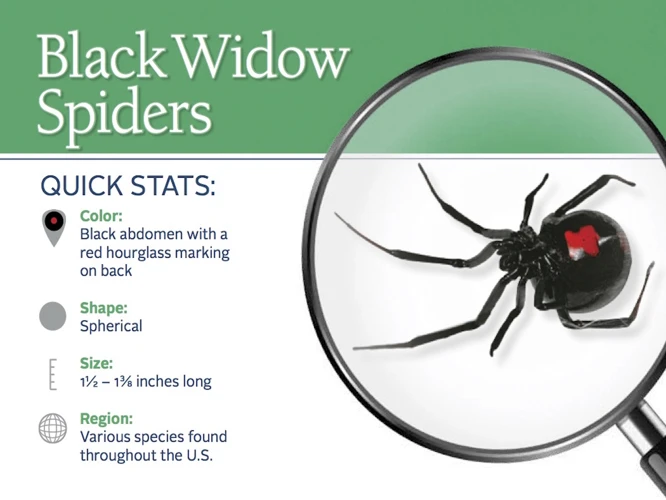
Being able to identify black widow spiders is essential for effective pest management. Prevention is the key to avoiding infestations and deterring black widow spiders from making their homes on your property. In this section, we will discuss methods for identification and prevention to ensure that your property stays safe from these venomous pests. Implementing these strategies can also help reduce the need for potentially harmful pesticides.
Identifying Black Widow Spiders
One of the most important steps in pest management is identifying the type of pest that is present. When it comes to black widow spiders, there are a few key characteristics that can help you distinguish them from other types of spiders.
Coloration: Black widow spiders are typically black or dark brown in color, with a shiny, almost metallic appearance. They may have a red or orange hourglass-shaped marking on their abdomen.
Size: Female black widows can range in size from 1/4 inch to 1 1/2 inches in length, including their legs. Male black widows are typically smaller and less venomous than females.
Webbing: Black widows are known for their unique webbing, which is strong and irregular in shape. They typically build webs in dark, secluded areas, such as garages, basements, and sheds.
Behavior: Black widows are known for their aggression and venomous bite. They are most active at night and will typically retreat to their webs during the day.
It’s important to note that there are other types of spiders that may resemble black widows, such as brown widows and false black widows. If you suspect that you have a black widow infestation, it’s best to seek the advice of a pest management professional to confirm the identification.
Once you have identified that you indeed have black widow spiders, you can take the necessary steps to prevent and control the infestation. Integrated pest management techniques, such as chemical and non-chemical approaches, biocontrol and mechanical control are effective ways to manage black widow populations. You can read more about pesticides and their effectiveness in the article on pesticides for black widows.
Preventing Infestations
A crucial aspect of effective pest management is prevention. Taking steps to prevent infestations of black widow spiders can save you time, money, and discomfort in the long run. Here are some preventative measures you can take to keep black widows at bay:
- Seal off entry points: Seal any cracks or gaps in your home’s exterior, including around windows, doors, and pipes. This can help prevent black widows from entering and establishing a habitat.
- Declutter: Black widows are attracted to clutter and debris, so it’s important to keep your living space tidy. Pay special attention to garages and storage areas where piles of boxes and clutter may accumulate.
- Eliminate hiding places: Black widows like to hide in dark, secluded places, so removing potential hiding spots can be an effective prevention strategy. Trim back shrubbery near your home’s exterior and keep firewood stored away from the house.
- Reduce lighting: Black widows are sensitive to light, so reducing the amount of exterior lighting around your home can help discourage them from taking up residence.
- Address moisture issues: Black widows are attracted to moisture, so it’s important to eliminate any sources of standing water. Repair any leaks or areas of your home that may accumulate water.
By taking a few preventative measures, you can significantly reduce the likelihood of a black widow spider infestation in your home. Prevention is always the best approach when it comes to pest management, and the steps you take now can go a long way in avoiding future issues.
Integrated Pest Management Techniques
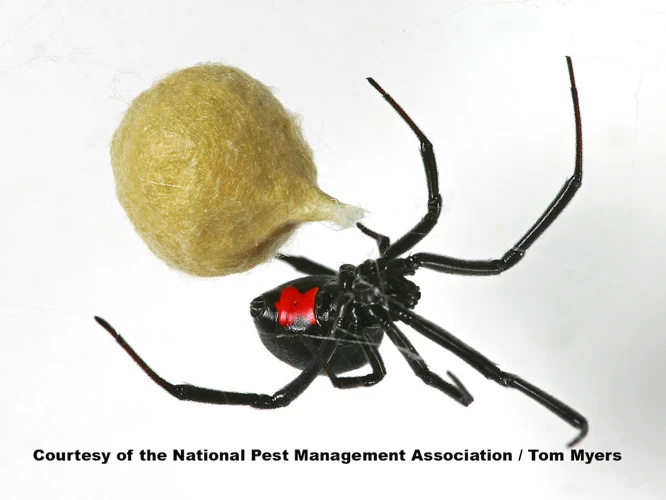
When it comes to effectively managing black widow spider infestations, a combination of different techniques is required. This is where Integrated Pest Management (IPM) becomes crucial. IPM techniques combine different approaches to pest control and aim to minimize the negative impact on the environment and non-target organisms while effectively managing black widow spider populations. In this section, we will take a closer look at different IPM techniques that can be employed to keep black widow spiders at bay.
Chemical and Non-Chemical Approaches
When it comes to managing black widow spiders, there are various approaches you can use. These approaches can be broadly categorized into chemical and non-chemical methods.
Chemical Approaches:
Chemical approaches involve using pesticides to kill or repel black widow spiders. However, it is important to note that pesticides can be harmful to humans and other non-target organisms. It is recommended to use them judiciously and in conjunction with other pest management strategies. Here are some examples of chemical approaches:
| Approach | Description |
|---|---|
| Insecticides | These are chemicals that are specifically designed to target insects and arthropods. Insecticides can be applied through sprays or baits and can effectively control black widow spiders. |
| Dusts | Dusts are insecticides that are applied as a powder. They can be used in cracks and crevices where black widow spiders hide. |
| Fumigation | Fumigation involves releasing a gas into an enclosed space to eliminate pests. This method is effective in killing black widow spiders that are hiding in hard-to-reach areas. |
Non-Chemical Approaches:
Non-chemical approaches are safer for humans and the environment. These methods rely on cultural, mechanical, and physical strategies to manage black widow spiders. Here are some examples of non-chemical approaches:
| Approach | Description |
|---|---|
| Sanitation | Sanitation involves removing clutter, debris, and other materials that provide hiding places for black widow spiders. This method is effective in reducing their population. |
| Exclusion | Exclusion involves sealing cracks, crevices, and other openings that can provide entry to black widow spiders. This method physically prevents them from entering a building. |
| Trapping | Trapping involves placing sticky traps or glue boards in areas where black widow spiders are likely to travel. This method can help monitor their population and reduce their numbers. |
It is important to note that a combination of both chemical and non-chemical approaches can be used to effectively manage black widow spiders. It is recommended to seek guidance from a professional pest management company to determine the best course of action.
BioControl
Biocontrol is an effective and environmentally friendly solution for managing black widow spider infestations. This method involves using natural predators or parasites to control the spider population without the use of harmful pesticides. In contrast to chemical pesticides that can have negative effects on the environment and non-target organisms, biocontrol is a safer and sustainable alternative.
Table 1: Examples of BioControl Agents for Black Widow Spiders
| Agent | Advantages | Disadvantages |
| Nematodes | Effective against immature spiders and eggs | May not work against adult spiders |
| Ladybirds | Effective against spider eggs | May not work against adult spiders; may feed on non-target organisms |
| Praying Mantis | Effective against adult spiders; general predator that can control other insects | May feed on non-target organisms; generally less effective than other agents |
| Spider Wasp | Effective against adult spiders; specific to black widow spiders | May not work against other spider species |
Biocontrol agents for black widow spider infestations can vary in their effectiveness and specificity. Nematodes, for example, are effective at controlling immature spiders and eggs, but may not be as effective against adult spiders. Ladybirds are effective at controlling spider eggs, but may feed on non-target organisms and may not work against adult spiders.
Other biocontrol agents for black widow spiders include praying mantis and spider wasps. Praying mantis is a general predator that can control other insects as well as adult black widow spiders, but may feed on non-target organisms and is generally less effective than other biocontrol agents. Spider wasps, on the other hand, are specific to black widow spiders and are effective at controlling adult spider populations, but may not work against other spider species.
Biocontrol can be a sustainable and effective solution for black widow spider infestations. However, choosing the right biocontrol agent is essential for success. A careful consideration of the advantages and disadvantages of each agent can help to choose the best option for biocontrol. The use of biocontrol should be combined with other integrated pest management techniques for a comprehensive and effective pest management plan.
Mechanical Control
Mechanical control involves physically eliminating black widow spiders from their environment. This method is effective for small infestations and can be used in combination with other control techniques for larger infestations.
| Technique | Description |
|---|---|
| Vacuuming | Vacuuming spider webs and egg sacs can remove them from the environment. |
| Removing clutter | Removing clutter and debris from the environment can deprive black widows of their hiding places. |
| Sealing cracks | Sealing cracks, gaps, and holes in walls, doors, and windows can prevent black widows from entering the indoor environment. |
| Sticky traps | Sticky traps can be used to capture black widows and other pests. |
It is important to use caution when using mechanical control methods, as black widow spiders are venomous and can be dangerous. Protective clothing and equipment should be worn, and a professional pest control technician should be consulted if necessary.
Best Practices for Pest Control for Black Widow Spiders
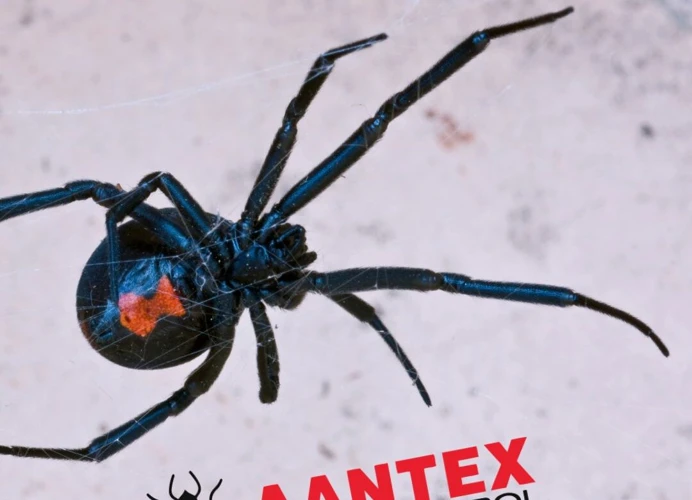
Ensuring proper management of black widow spider populations in and around homes and businesses is key to preventing harmful bites and maintaining a safe environment. To achieve effective pest control, it’s important to understand the best practices for dealing with these venomous arachnids. In this section, we’ll explore some of the most important strategies for identifying, monitoring, and treating black widow spider populations. By implementing these best practices, you can prevent infestations and keep your property safe.
Inspection Strategies
Inspection strategies are an essential component of effective integrated pest management for black widow spiders. To properly identify and locate these elusive and dangerous pests, a systematic approach must be taken when inspecting structures and surrounding areas. Some key inspection strategies to consider include:
- Surveying Potential Spider Habitats: When inspecting a property, it’s important to identify potential black widow spider habitats, such as woodpiles, cluttered storage areas, and dense vegetation. Focus your inspection efforts on these locations, as they are most likely to harbor black widow spiders.
- Using Flashlights and Mirrors: Black widow spiders are notoriously difficult to spot, so using a flashlight and mirror can help you identify these pests in even the smallest crevices and dark spaces. Be sure to thoroughly inspect areas such as wall voids, behind appliances, and in storage boxes.
- Analyzing Webbing: Black widow spiders are known for their distinctive cobweb-like webbing. If you spot this type of webbing during your inspection, it’s a clear indication that black widow spiders may be present in the area.
- Checking for Egg Sacs: Female black widow spiders lay egg sacs that can contain hundreds of spiderlings. These sacs are generally round, white, and about the size of a cotton ball. If you find an egg sac during your inspection, it’s important to take action to eliminate the infestation before the spiderlings have a chance to hatch.
- Documenting Your Findings: Throughout your inspection, be sure to take detailed notes and photographs of any signs of black widow spiders or their habitat. This will help you develop a targeted treatment plan and monitor the effectiveness of your pest control efforts.
By following these inspection strategies and implementing a comprehensive pest management plan, you can effectively control and prevent black widow spider infestations in your home or business.
Monitoring Techniques
Regular monitoring is essential to determine the effectiveness of the integrated pest management program. Monitoring techniques for black widow spiders can vary depending on the infestation and severity. However, some common techniques used by professionals include:
| Monitoring Technique | Description |
|---|---|
| Sticky Traps | Sticky traps are used to capture black widow spiders. Professionals place the traps in areas where spiders are more likely to be found, like near dark corners or areas where there is clutter. |
| Visual Inspections | Visual inspections are conducted to search for any signs of spider infestation, like webs, egg sacs, or live specimens. Inspections can be conducted by homeowners or professionals. |
| Mechanical Traps | Mechanical traps can be used to trap and remove established spider populations. They are typically used in combination with other control measures. |
| Bait Traps | Bait traps are used to attract and trap spiders. They are typically used for outdoor control and are effective when used along with other control measures. |
By using monitoring techniques, professionals can determine the extent of the infestation and adjust their control measures accordingly. Homeowners can also use these techniques to catch infestations early on and prevent them from becoming major problems. Remember, early detection is the key to effective pest management.
Treatment and Follow-up
Once an infestation has been identified, treatment and follow-up are crucial to ensuring effective black widow spider pest control. There are several treatment options available, including chemical and non-chemical approaches.
Chemical treatments are often used in cases of severe infestations. Common insecticides used for black widow spider control include pyrethroids, organophosphates, and carbamates. It is important to read and follow all label instructions when using chemical treatments, as incorrect usage can lead to health risks for both humans and pets.
Non-chemical treatments include physical removal of spiders, vacuuming up webs and spider egg sacs, and exclusion methods such as sealing cracks and gaps around doors and windows. Keep in mind that while non-chemical treatments may provide temporary relief, they are often not effective in completely eradicating an infestation.
Follow-up is an essential part of any effective black widow spider pest management plan. After treatment, it is important to monitor the affected area for any signs of new spider activity. Regular inspections and routine maintenance can help prevent future infestations. If spider activity is detected during follow-up, additional treatments may be necessary.
The following table provides a summary of common treatment and follow-up strategies for black widow spider pest control:
| Treatment and Follow-Up Strategies |
|---|
| Chemical Treatments |
| – Use insecticides containing pyrethroids, organophosphates, or carbamates |
| – Follow all label instructions |
| – Consider hiring a professional pest control service |
| Non-Chemical Treatments |
| – Physical removal of spiders |
| – Vacuum up webs and spider egg sacs |
| – Seal cracks and gaps around doors and windows to prevent entry |
| Follow-Up |
| – Monitor the affected area for signs of new spider activity |
| – Regular inspections and routine maintenance |
| – Additional treatments may be necessary if spider activity is detected during follow-up |
Remember, effective black widow spider pest control requires a comprehensive approach that includes identification and prevention, integrated pest management techniques, and follow-up. By following best practices and utilizing appropriate treatment methods, you can effectively manage and prevent black widow spider infestations.
Green Pest Management
As concerns about the impact of pest control on the environment continue to grow, more people are turning to “green” alternatives. Green Pest Management is a sustainable approach that focuses on using environmentally friendly methods to control pests. By minimizing the use of chemicals and applying methods that are low-risk, green pest management seeks to achieve a balance between controlling pest populations and protecting the environment. Let’s explore some of the most effective green pest management strategies for black widow spiders.
Environmentally Friendly Approaches
When it comes to pest management for black widow spiders, it’s important to consider environmentally friendly approaches that are safe for both humans and the ecosystem. Here are some effective and eco-friendly approaches to controlling black widow spider infestations:
1. Cultural Controls: One environmentally friendly approach to controlling black widow spider infestations is through the use of cultural controls. This involves modifying the environment to make it less hospitable to the spiders. An example of a cultural control is reducing clutter and debris around the property. Black widow spiders prefer to nest in dark, secluded areas, so keeping the area clean and tidy can discourage them from settling in.
2. Biological Controls: Biological controls involve the use of natural predators or pathogens to control the pest population. One example of biological control is using nematodes to target black widow spider larvae. Nematodes are natural parasites that feed on the larvae and prevent them from developing into adults.
3. Botanical Controls: Botanical controls refer to the use of plant-based pesticides or repellents to control the pest population. Essential oils like peppermint, eucalyptus, and lavender can be effective in repelling black widow spiders. However, it’s important to note that while botanical controls are generally considered safe and eco-friendly, they can still be harmful if ingested or applied incorrectly.
4. Physical Controls: Physical controls are non-chemical methods of controlling the pest population. This includes using non-toxic traps, vacuuming up spiders and webbing, and sealing cracks and gaps around the property. These methods can reduce the spider population without harming the environment.
By using these environmentally friendly approaches to pest management for black widow spiders, you can minimize the negative impact on the environment while effectively controlling the pest population. Remember, it’s important to always follow safe handling and application instructions for any pest control product or method, even those that are considered eco-friendly.
Conclusion
In conclusion, effective integrated pest management strategies for black widow spiders are essential for protecting homes and businesses from the dangers associated with these venomous pests. By identifying and preventing infestations, using a combination of chemical and non-chemical approaches, utilizing biocontrol and mechanical methods, and implementing best practices for inspection, monitoring, treatment, and follow-up, black widow spider populations can be successfully managed.
It is also important to consider environmentally friendly pest control methods. Green pest management approaches, such as the use of natural predators and plant-based pesticides, can be just as effective as traditional methods without harming the environment.
Overall, it is crucial to take a comprehensive and proactive approach to black widow spider control. By adopting these strategies and best practices, homeowners and business owners can protect themselves and their property from the dangers associated with black widow spider infestations. Remember, prevention is the key to effective pest management.
Frequently Asked Questions
What are the physical characteristics of black widow spiders?
Black widow spiders are shiny and black, with long and slender bodies. Females are larger than males and have a distinctive red or orange hourglass-shaped marking on their abdomen.
Are black widow spiders dangerous to humans?
Yes, black widow spiders are venomous and their bite can be dangerous to humans. It’s important to seek medical attention if bitten by one.
How can I identify black widow spider infestations in my home?
Look for the distinctive webbing of black widow spiders, which is irregular and tangled. Additionally, keep an eye out for their shed skins and egg sacs.
How can I prevent black widow spider infestations?
You can prevent black widow spider infestations by sealing up cracks and crevices in your home, removing debris and clutter from around your property, and storing firewood and building materials off the ground.
What is integrated pest management?
Integrated Pest Management (IPM) is a holistic approach to pest management that uses a combination of strategies, including chemical and non-chemical techniques, to control pests. This approach focuses on preventing pest infestations before they occur, rather than relying solely on pesticides.
What are some chemical approaches to controlling black widow spiders?
Chemical approaches to controlling black widow spiders include pyrethroid insecticides and desiccant dusts. These products should be used with caution and only as a last resort.
What is BioControl?
BioControl is the use of pests’ natural enemies, such as parasitic wasps and spiders, to control pest populations. This technique is an important aspect of IPM and can be an effective approach to controlling black widow spiders.
What is mechanical control?
Mechanical control refers to physically removing pests from an area, such as with a vacuum or by trapping them. This approach can be effective for controlling black widow spiders, but should be used alongside other strategies.
How can I inspect for black widow spiders?
To inspect for black widow spiders, look for their distinctive webbing, egg sacs, and shed skins. You should also check dark areas of your home, such as inside closets and behind furniture, where these spiders tend to hide.
What are some environmentally friendly approaches to controlling black widow spiders?
Environmentally friendly approaches to controlling black widow spiders include using sticky traps, beneficial insects, and diatomaceous earth. These approaches are generally safe for people and pets and are a good choice for those who want to avoid chemical pesticides.

